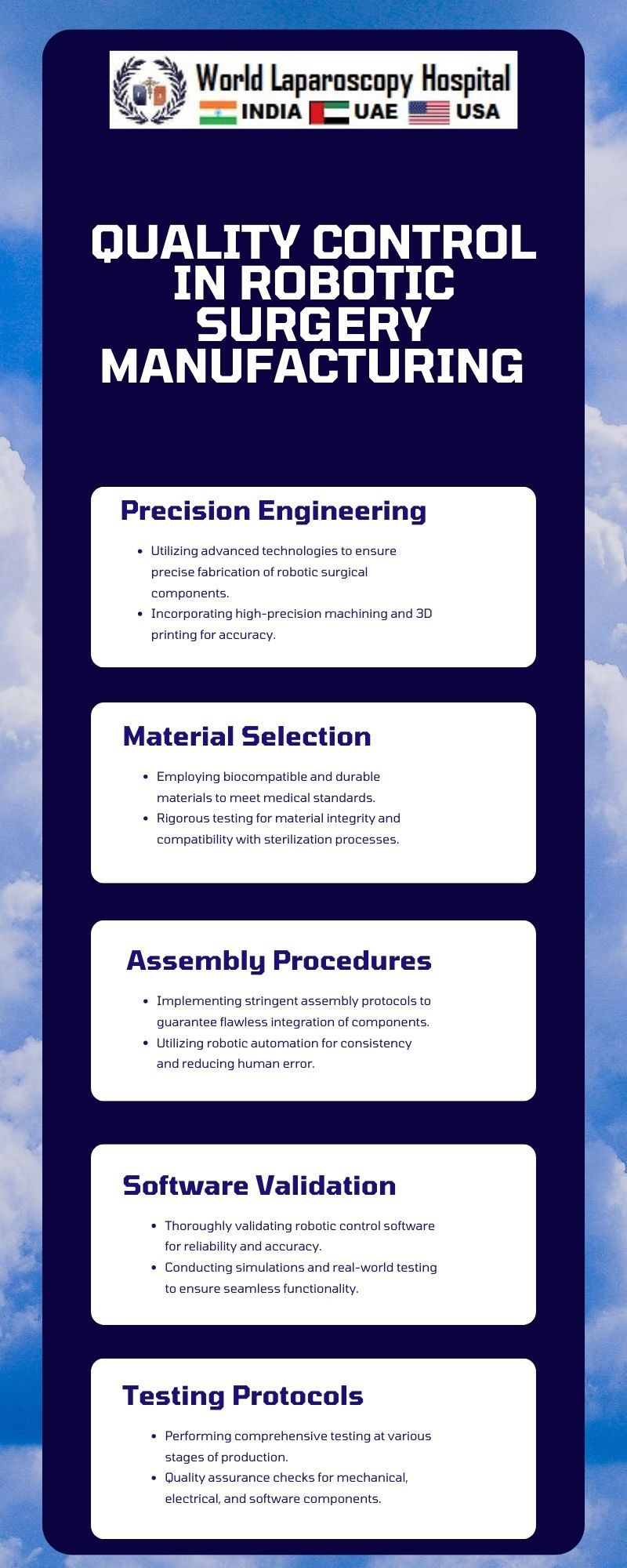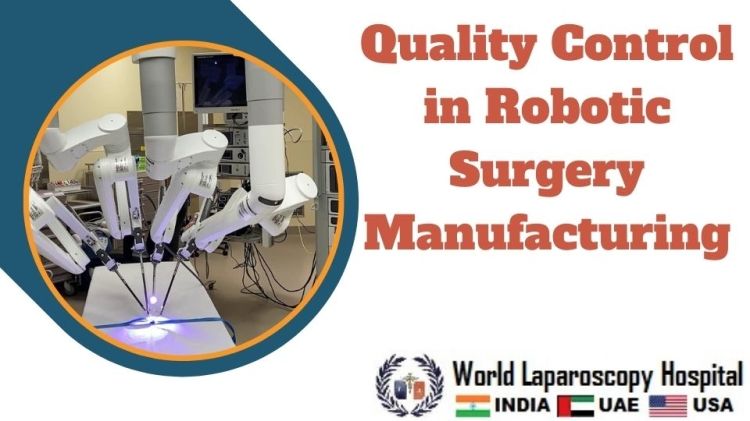Quality Control in Robotic Surgery Manufacturing
Introduction
Robotic surgery has revolutionized the medical field, offering enhanced precision and improved patient outcomes. As this technology continues to advance, the importance of quality control in the manufacturing process becomes paramount. Ensuring the reliability and safety of robotic surgical systems demands a meticulous approach throughout each stage of production.

The Evolution of Robotic Surgery
Robotic surgery has come a long way since its inception. The development of minimally invasive procedures using robotic systems has transformed the landscape of medical interventions. The integration of advanced robotics into surgical practices has opened new possibilities, allowing surgeons to perform complex procedures with increased accuracy and reduced invasiveness.
Components and Materials: The Foundation of Quality
The first pillar of quality control in robotic surgery manufacturing lies in the selection and verification of components and materials. From high-precision motors to durable alloys, every element must meet strict standards. Thorough testing of materials for biocompatibility, wear resistance, and structural integrity is crucial to ensuring the longevity and safety of the robotic systems.
Precision in Fabrication: Crafting the Robotic ComponentsThe manufacturing process involves crafting intricate components that contribute to the robotic system's overall performance. CNC machining, laser cutting, and 3D printing are among the technologies employed for precision fabrication. Quality control measures at this stage include dimensional checks, surface finish inspections, and material composition analyses.
Assembly: Bringing Components TogetherThe assembly phase is where the individual components come together to form a fully functional robotic system. Each step in the assembly process is carefully monitored to guarantee proper alignment, secure connections, and adherence to design specifications. Robotic arms, joints, and end-effectors are meticulously calibrated to ensure optimal performance during surgical procedures.
Software Integration: The Brain of Robotic SurgeryThe software that controls robotic surgery systems is a critical element in achieving precision. Quality control in software development involves extensive testing for functionality, compatibility, and security. Regular updates and patches are essential to address any potential vulnerabilities and to enhance the system's capabilities.
Testing Protocols: Simulating Real-World ConditionsComprehensive testing protocols are integral to quality control in robotic surgery manufacturing. Simulating real-world surgical scenarios allows engineers and quality control experts to evaluate the system's performance under various conditions. This includes stress testing, fault tolerance assessments, and scenario-based simulations to ensure the robotic system's reliability in the operating room.
Regulatory Compliance: Meeting Industry StandardsAdherence to regulatory standards is a non-negotiable aspect of quality control in robotic surgery manufacturing. Compliance with international regulations and industry-specific standards ensures that robotic surgical systems meet the highest safety and performance benchmarks. Regular audits and assessments are conducted to verify compliance and address any emerging regulatory requirements.
Continuous Improvement: Learning from ExperienceThe field of robotic surgery is dynamic, with ongoing advancements and innovations. Quality control is not a one-time endeavor but a continuous process of improvement. Manufacturers routinely gather feedback from surgeons, monitor system performance, and incorporate lessons learned into the design and manufacturing processes. This iterative approach ensures that robotic surgical systems evolve to meet the evolving needs of the medical community.
User Training and Support: Ensuring Safe ImplementationQuality control extends beyond the manufacturing plant to the end-users – the surgeons and medical professionals who operate the robotic systems. Providing comprehensive training programs and ongoing support is vital to ensure that users can harness the full potential of the technology while maintaining patient safety. This includes regular updates on best practices, troubleshooting guides, and access to a dedicated support team.
Post-Market Surveillance: Monitoring Performance in the FieldEven after a robotic surgical system is deployed, quality control measures continue through post-market surveillance. Monitoring the performance of systems in the field, gathering real-world data, and addressing any issues that arise are essential components of ensuring ongoing quality and safety. This feedback loop between manufacturers and end-users contributes to the refinement of future generations of robotic surgery systems.
Conclusion
Quality control in robotic surgery manufacturing is a multifaceted process that involves precision in material selection, meticulous fabrication, stringent testing, regulatory compliance, continuous improvement, and ongoing support for end-users. As robotic surgery continues to advance, manufacturers play a pivotal role in shaping the future of medical interventions. By prioritizing quality at every stage of production, we can ensure that robotic surgical systems not only meet but exceed the expectations of precision, safety, and reliability in the ever-evolving field of healthcare.


